
views
- Combine exercises that target your thighs and glutes with full-body workouts to slim down your figure.
- Drink enough water to hydrate yourself after workouts. Cut out sugary drinks since they have empty calories and can cancel out the calories you burned off.
- Eat complex carbs to keep your blood sugar down and avoid gaining weight. Consume lean meats, like turkey and chicken, to feed your muscles.
- Make vigorous activity a regular part of your lifestyle. For example, bike, swim, jog, or play competitive basketball in order to work off tons of calories.
Exercising and Dieting
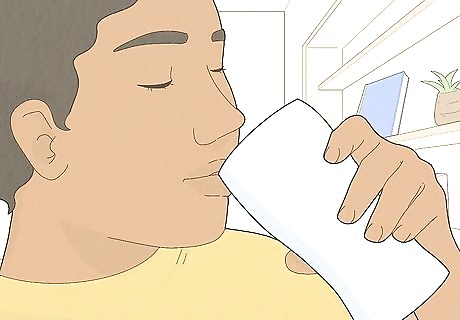
Hydrate with water and cut back on sugary beverages. To stay hydrated, stick to water since it flushes out harmful toxins, carries nutrients to your cells, and lubricates your bodily tissues so they can function at their best. Aim to drink at least 64 ounces (8 cups) of water per day. Avoid sodas, energy drinks, and juices, which all tend to have tons of sugar and empty calories. Some can even total 300 calories, which can cancel out the calories you burned from a whole workout. Drink green tea, which is a great source of antioxidants that protect you against heart disease. Green tea also contains polyphenols, which help reduce your risk of getting cancer. Best of all, tea is about 1-2 calories per liter, so a single cup of unsweetened tea is about as guilt-free as it gets! Drink a cup of tea or a glass of water 30 minutes before you eat a meal. You’ll feel more full, so you’re less likely to overeat.
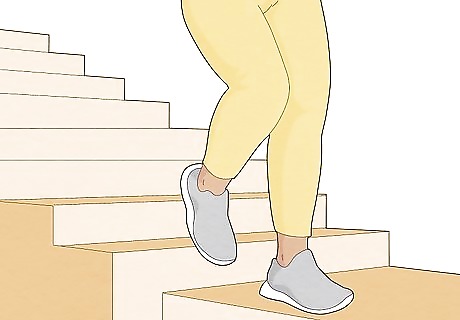
Take the stairs whenever you can. Ditch escalators or elevators and walk up stairs instead—this underrated exercise is a great way to burn off 8-11 calories per minute; in fact, taking 2 flights of stairs a day can help you lose 6 lb (2.7 kg) a year. Not only that: taking the stairs reduces your risk of getting arthritis in your knees and works out your quads.
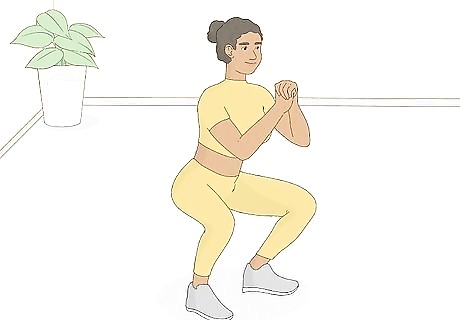
Do squats. There are tons of different squat exercises—like sumo squats with a kettlebell or dumbbell squats—but the basic idea is this: stand so your feet are shoulder-width apart and lower your butt until it’s parallel to the ground. Hold for 3-5 seconds before standing back up. Perform 12-15 repetitions. Try doing squats with a balance ball. Place the ball against the wall and lean your lower back against it. Not only will the ball increase the intensity of the squat—it will also give you a nice back rub!
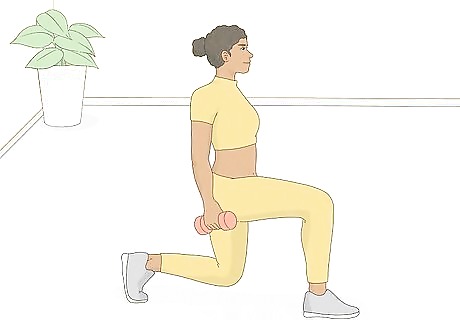
Do lunges. Hold a 5–8 lb (2.3–3.6 kg) dumbbell in each hand and bend your leg at a 90 degree angle to lunge forward. Step back with your opposite knee and keep it about an inch above the ground. Perform 12-15 repetitions, then switch legs.

Do diamond kicks. Roll out an exercise mat and lay down on your back. Keep your arms by your sides. Raise your legs toward the ceiling, then spread them out as far as you can. Squeeze your inner thighs. Bend your knees and bring the soles of your feet together. Perform 12-15 repetitions to target your inner thighs. This exercise will also work out your glutes, abs, thighs, and hips.
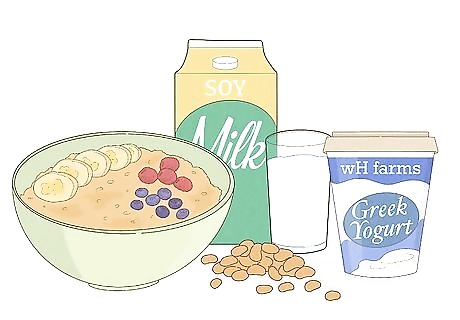
Eat healthy. You don’t need to go on a diet to eat healthy—just watch what you eat and prepare balanced meals to help you slim down and get fit. To balance a meal, make sure that you integrate all of these important food groups: Carbohydrates: Your body absorbs complex carbs (like oats, whole-wheat products, and brown rice) more slowly, so your system won’t be overloaded with sugar. Protein: Lean meats (like turkey and chicken) and other protein-rich foods (like beans, soy products, and nuts) help to feed your muscles. Fruits and vegetables: “Superfoods” (like kale, blueberries, and swiss chard) take more calories to burn off than the foods themselves contain, so they promote weight loss. Good fats: Sources of omega-3 fatty acids and monounsaturated fats (like nuts, olive oil, seed oil, and fish) are “good fats” that help you lower your cholesterol. Dairy: Low-fat dairy products (like yogurt and cottage cheese) are excellent sources of protein and calcium. Yogurt is especially great to eat since it contains bacteria that helps you digest food.
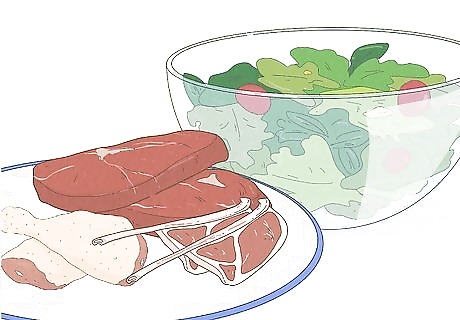
Consider a low-carb (Atkins) diet. If you’d like to avoid your body converting your food to sugar and producing insulin, which gets turned into fat, steer clear of starchy and highly processed foods, like white bread. Instead, switch to a low-carb diet full of proteins (like lean meats and soy products), vegetables, fruits, and nuts. Limit the number of carbs to 20% of your diet, since your body does need glucose to function. To stick to a low-carb Atkins diet, include these staples: Unprocessed, high-protein meats, such as beef, lamb, pork, chicken, and turkey. Unprocessed, high-protein fish, such as salmon, tuna, mackerel, and trout. Low-carbohydrate vegetables and leafy greens. Full-fat, unprocessed cow, goat, or sheep's milk cheeses.
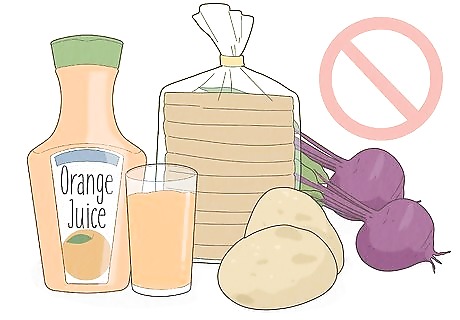
Be aware of what foods aren’t low-carb and avoid them. If you want to cut back on foods that are likely to cause spikes in your blood sugar levels, avoid sugary and starchy foods. These will cause you to produce more insulin and increase your likelihood of gaining excess weight. Foods that aren’t part of a low-carb diet include: Processed grains, like pasta, bread, cakes, or pastries Sugary fruits (like bananas, figs, and pears) and fruit juices Packaged snack foods with added oils and sugars Starchy vegetables (like potatoes, beets, or corn) Sugar or margarine
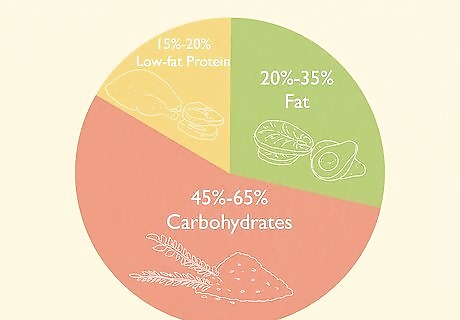
Consider a low-calorie diet. If you burn more calories than you take in, you’ll undergo a “calorie deficit” and lose weight. When you go on a low-calorie diet, make sure not to cut your calories too drastically—it’s generally not safe to attempt to lose more than 2 lb (0.91 kg) a week. Limit the amount of fat you eat to 35-60 grams per day; fats should make up about 20% to 35% of your daily calorie intake. Aim to eat about 170-240 grams of complex carbs (e.g., whole grains, fruits, and vegetables) per day; complex carbs should make up about 45%-65% of your daily calorie intake. Try to get 55-95 grams of low-fat protein (e.g. lean meats like poultry and fish); low-fat proteins should make up about 15%-25% of your daily calorie intake.
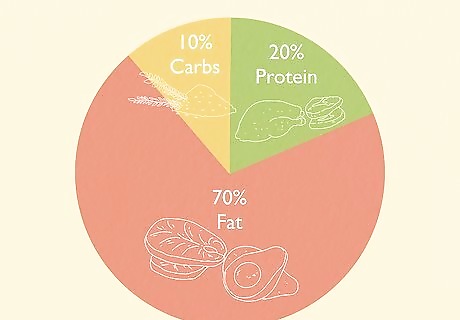
Try a ketogenic (keto) diet. Keto diets are similar to low-carb diets since they involve cutting carbohydrates and substituting them with fats and proteins. The main difference between a keto diet and an Atkins diet is that a keto diet involves meals that are higher in fat and lower in protein. Why fats instead of protein? If you eat too much protein, your body turns excess protein into glucose, which spikes blood sugar and insulin levels. When your blood sugar and insulin levels are high, you’re more likely to gain weight. Limit the number of carbs you eat to 20-50 grams per day. On a keto diet, shoot to get about 70-75% of your calories from fat, 20-25% from protein, and 5-10% from carbs. Invest in a carb counter guide so you can track how many carbs are in certain foods.
Maintaining Physical Health
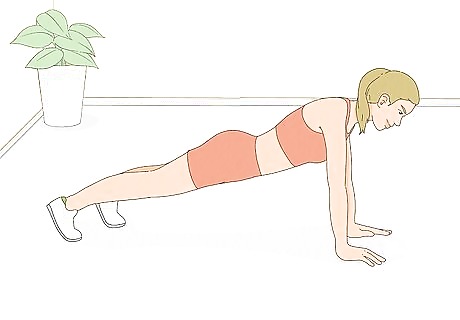
Exercise your whole body. When you exercise, your body converts your excess fat into usable energy using a process called “ketosis.” However, when you work out, you lose fat from all over your body, not just from specific places, like your thighs. In order to slim down your thighs, you’ll have to work out your entire body.
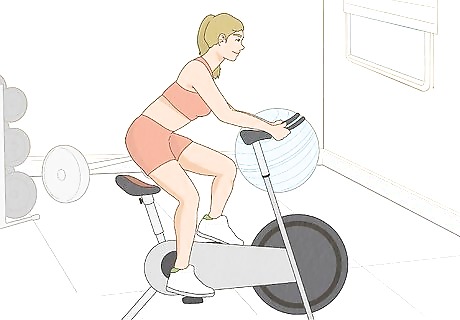
Get a solid full body workout at the gym. For a full-body workout that burns a lot of calories, try biking or swimming; they’re high-impact and easy on your joints. These activities are especially recommended if you suffer from arthritis or have an injury. Aim to add hour-long full body cardio workouts into your routine at least 3 times a week. While cardio exercises help to tone the muscles in your thighs, you’ll also have to eat healthy and undergo a calorie deficit to reduce their size.
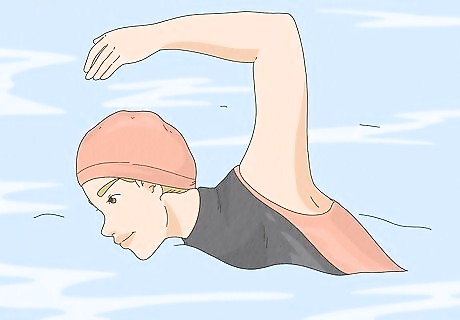
Play a sport. Join a recreational or competitive league or just play with your friends. Not only will you have a ton of fun, you’ll also burn a lot of calories. When you’re swept up in your favorite activities, you’ll probably put your all into them, which will lead to an awesome full body workout. If you’re not really a competitive person, try to work out in a group with your friends. For example, go to the gym together every week. Or, get exercise videos like Insanity or P90X and do them at your house. It’ll be refreshing and motivating to have accountability buddies.
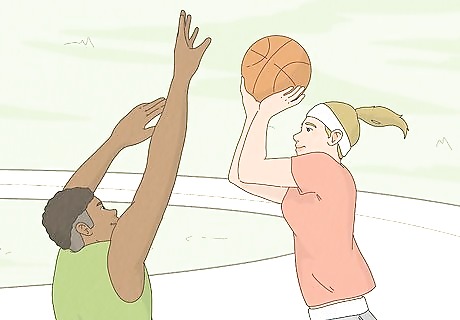
Stick to exercises that burn a lot of calories. While gentle workouts like yoga and Pilates can tone your muscles, they’re not activities that burn a lot of calories—they each burn about 200 calories per hour. A more vigorous activity, like competitive basketball, burns about 800 calories. If you’re serious about losing thigh fat, then add an intense workout program to your calorie-busting routine.
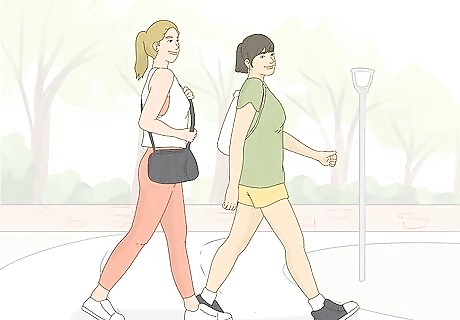
Walk whenever you can. If you do nothing else, walk. Walking is an overlooked and underrated exercise. Depending on your weight and your pace, you can burn anywhere from 100-400 calories per hour walking. While walking doesn't take it out of you like running, biking, or swimming does, it’s a great way to gradually lose weight over time. Find a walking partner and work on burning calories together!
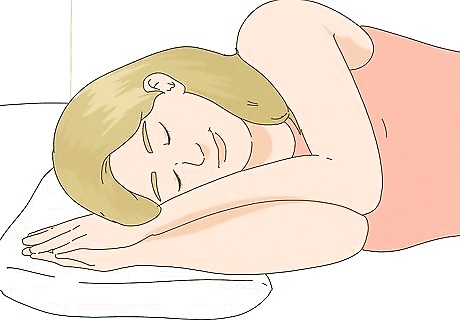
Make sure to get enough rest. With all this working out, you should feel exhausted and worn out. (That's a good sign!) The great part is that getting enough sleep can also help you lose weight. That's right: Sleeping enough can help you lose weight. When you don’t get enough sleep, your body produces a hormone called “grehlin,” which stimulates your appetite. Not only that—it lowers levels of another hormone called “leptin,” which tells your body that it’s full. When you’re underslept, you’re more likely to overeat. If you’ve been missing out on sleep, check with your doctor to see if you have sleep apnea, a condition that causes you to stop breathing for periods of time when you try to sleep. A physician can help you find ways to cure sleep apnea.

















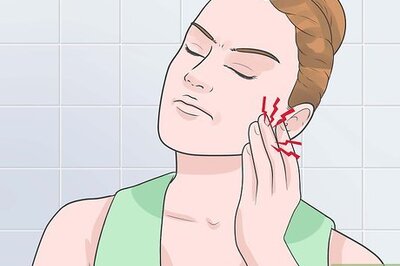
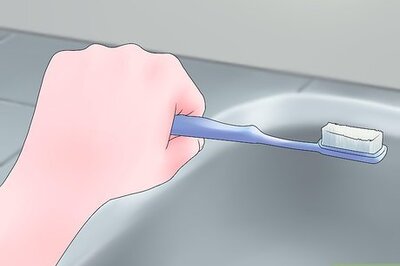
Comments
0 comment